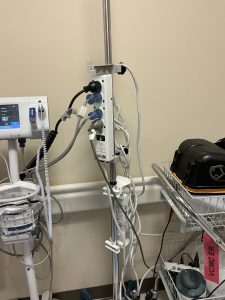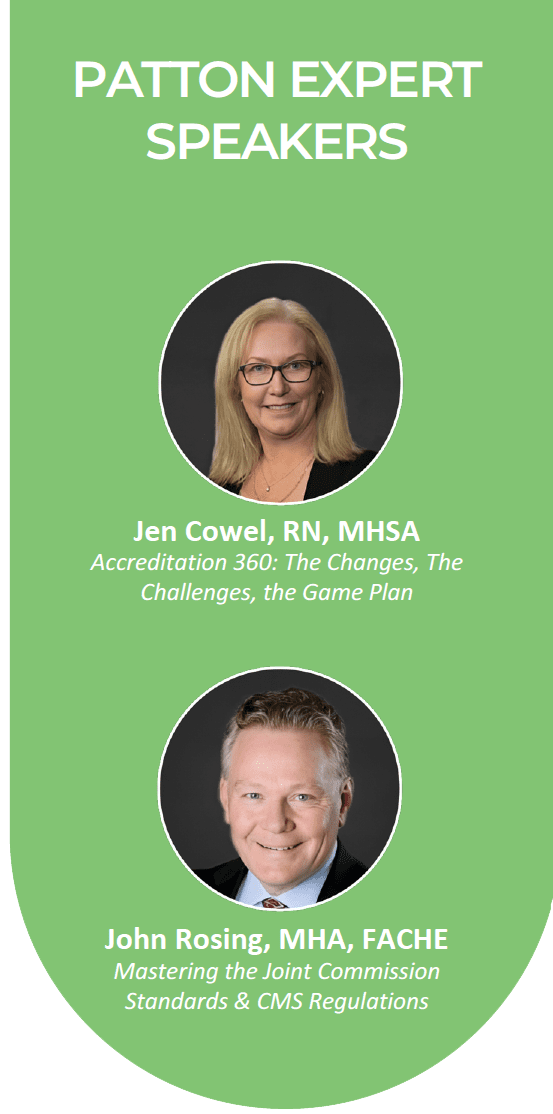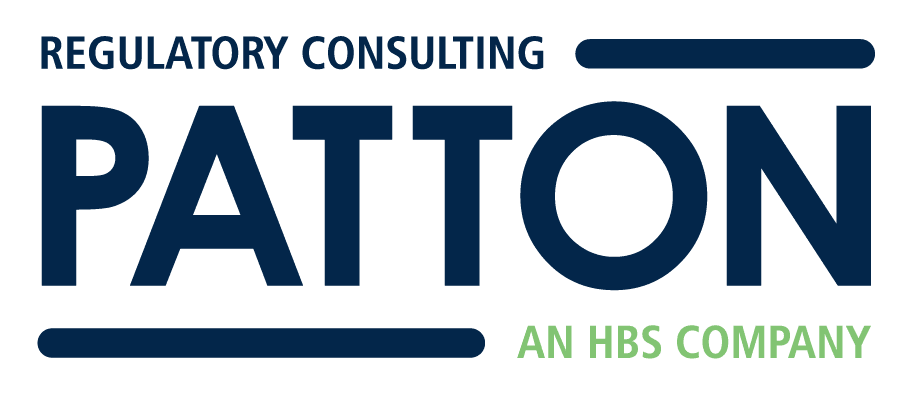October 2025
Inside This Issue
This month’s edition of Perspectives discusses several of the new additional service concepts JC is launching for 2026, beyond just their new standards. The good news here is that there are concepts you should be aware of, options to consider, but no new requirements that would cause you to scramble prior to January, other than getting used to the new standards format and content.
 SAFEST Initiative:
SAFEST Initiative:
The first new concept they discuss is what they call their SAFEST Initiative. Beginning in January, JC is going to document “performance strengths” that they see on survey in the body of the survey report. We can recall many organizations suggesting this when we worked at JC because the traditional report only describes what you did wrong. It can feel punishing when the surveyors conducting the survey are significantly praising the organization throughout the visit, but the report only identifies the gaps.
In this new model, after the survey is completed, if a “performance strength” is noted, someone from the JC central office will call to try and obtain additional information about the practice. Choosing to submit any materials is optional. Those who do choose to submit materials will have the information posted to the secure extranet for all accredited organizations to access.
It sounds somewhat like the less formal “best practices” examples surveyors used to carry around with them, but with more widespread access and a validation process to ensure it really is a best practice.
 Continuous Engagement Model:
Continuous Engagement Model:
You probably have noted many changes to the JC website. Perspectives this month discusses a new portion of their website where they are compiling Q+A about their new processes and survey models. One new service concept is what they are calling a “continuous engagement model,” where there can be touchpoints between triennial surveys to help maintain survey readiness.
This concept has also been circulating around for many years as the Joint Commission’s PPR self-assessment, intracycle monitoring, and even our own CAS, or Continuous Accreditation Support, consulting program. In our CAS program we conduct periodic, focused visits, examining one or two performance areas during the visit. This allows the organization to focus and develop a narrower plan of correction than does a full consultation team visit.
Periodic visits by JC throughout the triennial period has potential merit as organizations do like to know how they are doing, but separating actual accreditation surveys from real consultative support might be challenging for a deemed status accreditor. Perspectives does include a link to Q+A relative to these new services that you may not have noticed independently searching for content on their website.
 Knowledge Library:
Knowledge Library:
As mentioned, JC has developed some free webinars relative to their new accreditation model they call Accreditation 360, and their standards changes. At this time, they now have four (4) webinars/chapters posted – HR, LD, PE and NPG – but Perspectives also contains a link to what they are calling a “Knowledge Library” that you may not have found independently. This link provides access to a wide array of previously delivered webinars that may be useful if you have not previously seen the initial program. Do take a look.
Some readers have questioned why we include links to other publicly available content but not the direct links to non-password protected JC content. JC has informed us that they prohibit external groups such as ours from making any direct links to their website aside from their main homepage – but Perspectives or EC News do contain these clickable links for you.
 Environmental Risk Assessment for Suicide Safety:
Environmental Risk Assessment for Suicide Safety:
The October issue of EC News has a refresher article on environmental risk assessments for suicide safety. The environmental risk assessment is an issue that many organizations do struggle with because they sometimes limit their identified environmental hazards to what they have seen a patient attempt to use in their organization and don’t consider all the potential hazards that other organizations have identified based on their experience and population.
The EC News article contains several useful web links to resources from JC, The Pennsylvania Patient Safety Authority, Veterans administration, and JCR. The Pennsylvania Patient Safety Authority link, called “Risky Rooms” looks particularly helpful and it includes diagrams of room features that can be used for educational programs about potential hazards. The room diagrams include an answer key in one format and lack any pre-identified hazards in a second format for teaching purposes.
This article and the links are certainly worth a careful review and at the conclusion of your review we would suggest a revisit to your existing environmental risk assessment for suicide safety, and you may have missed some of the features Pennsylvania, the Veterans Administration, or JCR identify as potential ligature hazards.
 Relocatable Power Taps:
Relocatable Power Taps:
EC News has a Q+A article on relocatable power taps that looks particularly helpful given the changed format for standards in 2026. Survey problems with power strips have been a persistent problem for many years now as there are many minute specifications relative to the power strip that must be compliant.
These minutiae are detailed today in the accreditation manual under EC.02.05.01, EP 23. Issues such as the UL rating, the nature of the equipment the strip is powering, how the strip is attached, the location of the strip, either patient care room or non-patient care room, and the ampacity of the strip are all evaluated. These specifics are all detailed in EP 23 and the EC News article. However, in 2026 this same issue will be evaluated under new standard, PE.04.01.01, EP 1, which is much more succinct. It simply states you must be compliant with NFPA 99-2012 and the amendments to this publication.
We suggest carefully reviewing the EC News article and existing standard to verify compliance on what is already a frequently cited issue to help avoid getting surprised in a future year by the new simplified format.
 Emergency Generators:
Emergency Generators:
The October issue of EC News has another refresher article on emergency generator inspection, testing and maintenance (ITM). The August issue of EC News and our August Patton Post had previously discussed this same issue. The changes for 2026 are similar to our discussion above relative to power strips, in that the detailed ITM requirements for emergency generators that are currently detailed in EC.02.05.07, go away in more succinct 2026 version of the standards.
The October EC News does contain a link to a checklist resource that JCR has developed and posted to their Accreditation 360 site that contains the detailed requirements for testing an emergency generator.
![]() DNV: New Podcast:
DNV: New Podcast:
DNV has posted a new podcast to Spotify, DNV US Healthcare Symposium 2025. This podcast, which is approximately 24 minutes long, describes their upcoming US Healthcare Symposium that will be held in Costa Mesa, CA from October 20-23. They describe that they are bringing back the virtual attendance option for those who cannot travel to California, as well as discuss anticipated highlights from the program.
For those of you who prefer to read about the program, you can visit their Event Page Summary or view their planned agenda.
![]() CIHQ: Upcoming Webinar and Annual Summit:
CIHQ: Upcoming Webinar and Annual Summit:
CIHQ will be offering a webinar on November 21, Top Findings in the Care Environment, reviewing the most common survey findings and offering strategies to help organizations prepare for inspections. Those accredited by CIHQ or ARS members receive complimentary registration by logging into their ARS website. Non-CIHQ or ARS attendees must register.
CIHQ has information posted about their annual Accreditation and Regulatory Summit to be held in San Antonio Texas from Oct 21-23 that can be accessed through their Information & Registration page.
![]() ACHC: New Blog and Website Discovery:
ACHC: New Blog and Website Discovery:
ACHC has new blog post this month called Accreditation Theater: The Illusion of Rigor in Healthcare Accreditation,. They offer their perspective on what other accreditors are doing by creating complex requirements then claiming credit for later removing such requirements. We believe this may be an editorial comment on the changes JC is implementing, but it is interesting reading.
We also noted a portion of their website, Regulatory Updates, where you can search for industry or state based changes of ![]() interest sorted by accreditation program. For example, we searched for acute care hospitals, and they have content relative to a Massachusetts specific respiratory infection initiative, as well as summary information about the changes to Inpatient prospective payment rules for the coming year. This is worthwhile to take a dive into.
interest sorted by accreditation program. For example, we searched for acute care hospitals, and they have content relative to a Massachusetts specific respiratory infection initiative, as well as summary information about the changes to Inpatient prospective payment rules for the coming year. This is worthwhile to take a dive into.
 PHE QSO Memo Revisions:
PHE QSO Memo Revisions:
CMS posted a revision to QSO 23-15 originally published on May 11, 2023. The revision is dated 9/23/25 and it describes two areas of flexibility that were implemented during the pandemic that are being eliminated. The first is that CMS will be eliminating the (non)enforcement discretion for remote review of cytology slides. Laboratories performing such remote review will need to obtain a CLIA license for that remote site within the next six (6) months if they plan to continue to use the remote location. The second change affects current enforcement discretion for the i-STAT troponin test. This is no longer tied to the public health emergency but will only continue until March 30, 2026.
 NCC QSO Memo Revision:
NCC QSO Memo Revision:
On September 10 CMS posted a revision to QSO 25-20 affecting the long term care industry. The change affects the performance measure for long stay antipsychotic medication use in nursing facilities that is used in Nursing Home Compare. This revision changes the implementation deadline to January 28, 2026.
Inpatient Prospective Payment System:

While we don’t usually discuss CMS payment rules in our newsletter, the annual changes to the Inpatient Prospective Payment System requirements cross over into so many clinical performance measurement requirements that they do impact clients. If interested, CMS has created a website with all the recent changes to IPPS that you can access through their FY 2026 IPPS Final Rule Home Page.
CONSULTANT CORNER
By now, we’re sure you’ve heard about the Joint Commission’s Accreditation 360, but what does it mean for you and your team, and how can you stay prepared?
Join us live for a free webinar, on Tuesday, October 14 from 11:30 – 12:30PM CT.
Accreditation 360: The Changes, The Challenges, The Game Plan will break down key elements, share practical insights, and answer your questions.
Approved by the California Board of Registered Nursing for 1.0 Contact Hours; Provider #18068
You may also be interested in joining us at for our workshop, Mastering the Joint Commission Standards and & CMS Regulations being held at the OR Manager Conference on October 28-30 in Anaheim, CA.
Attend and learn how to identify the most problematic standards, highlight how surveyors assess your compliance, and methods to install bullet-proof solutions to ensure a finding-free survey.

Thank You!
Julia Finken, RN, BSN, MBA, CPHQ, CLSSMBB
Julia.finken@hbsinc.com
Jen Cowel, RN, MHSA
jencowel@pattonhc.com
Yvonne Rockwood, MBA, MHA, CPHQ
yvonnerockwood@hbsinc.com
